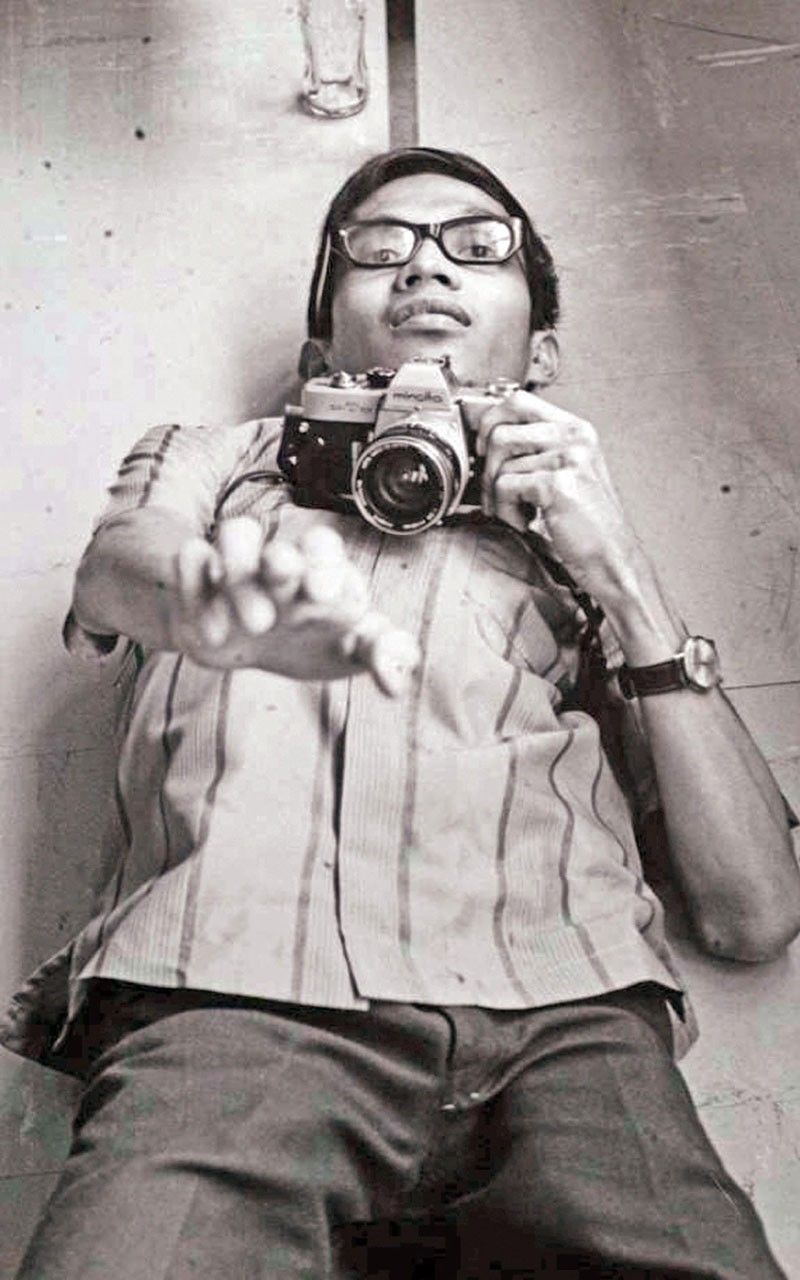Ray Albano: Playing in the sandbox of Art

MANILA, Philippines — In his relatively short but fruitful life, Ray Albano wore many hats: he was a museum assistant, arts administrator, critic, curator, graphic designer, painter, photographer, poet, writer.
His place in Philippine contemporary art is secure and contentious at the same time: he plays an essential role in the development of local conceptual art under the watch of a dictatorship; he had done so as he occupied the regime’s newly-founded Cultural Center of the Philippines, first as curator of the Visual Arts Department, and later as the institution’s director himself until his death in 1985.
However, it is in his role as cultural administrator that we can find the competing urges of order and playfulness. The enterprise of artmaking for the state involves the making of posters. Posters are functional pieces of paper that disseminate information about events at the Cultural Center, when the visual arts section was at its most active. Albano did not just churn out posters for the CCP’s many activities. He tried out combinations of bold typography with gradients of color, outlines of objects set in a void, bare announcements of date and time juxtaposed with a collage of the event’s title. Utilitarian documents are afforded with craftsmanship that also betrays a child’s whimsy. Within the limits of his role as government functionary, Albano managed to retain the artist’s sportive impulse and push the development of art in the stage of mechanical reproduction.
Albano’s high-spirited experiments with reproducible documents exhibits a link to his attitude towards artmaking — his opposition to creation that results in collectible objects and his embrace of ephemera, or objects of fleeting impermanence. This cannot be more visible than in his work “Step on the Sand and Make Footprints.” It was first submitted to the Tokyo International Biennial Exhibition of Prints in 1974 as a print and awarded a prize as a print. The work was thus first recognized for its function--a mechanical reproduction, a documentation of the actual object, a sandbox where guests are invited to step in and make marks on the sand.
Conceptual art by its very nature is transient, a “happening” intended to be experienced and exists mainly as an idea and not meant to exist as a tangible object in the physical world, as in the Allegory of Plato’s Cave. Conceptual art is therefore like Albano’s posters announcing art events. They are ephemeral, even if they exist temporarily as objects. Many works of this nature are lost, and we only know of them based on the photographs, records, documentation that remain. Which is how most of us in the Philippines have previously experienced Albano’s sandbox, as a triumph we read about from a now distant past, gazing at the reproduced photo of object where Japanese and other guests of the Tokyo Biennial have tread, their footprints as frozen on the photo that accompanies the report. Or if lucky, we might have chanced upon a miniature reproduction of the sandbox at the Printmakers Association of the Philippines’ “Tirada: 50th Anniversary Exhibition” at the CCP in 2018. This “tribute” to Albano comprised a square meter of sand corralled by wooden planks, with footprints that are presumably not Japanese.
In computing, a sandbox is a virtual space in which new or untested software can be run securely. The key word here is “secure.” You are certain to remain safe and unthreatened, as in the sandbox in the playgrounds of our childhood. In the limited world of the sandbox, we are encouraged to amuse ourselves, have fun with building castles or burying limbs and selves. While at play, we are protected against attack, lucky to emerge unscathed and unencumbered by unbridled by the consequences of playtime. In the real world, actions have repercussions and are vulnerable to attacks. Albano’s sandbox was a safe space for the nascent way of artmaking at a time when the dictatorship favored art objects that could be hung on walls, sold and displayed as trophies of culture and status.
The Dutch historian and cultural theorist Johan Huizinga surmised, as early as 1938, that playing was necessary for the generation of culture, of art. Albano’s posters and artmaking reveal a desire for the unbridled care of childhood and games, while at the same time being protected by his stature as head of a cultural institution. It’s interesting that Art Fair Philippines/Projects is remounting Albano’s sandbox in this current political climate. Previously unknown or only seen as a picture in an art history book by today’s generation, Ray Albano’s sandbox will now be an immersive experience, a full-size play-box for Filipinos who are once again threatened by a regime similar to that at the beginning of Albano’s career.
In the sandbox, one is free to imagine, to make marks that can be undone, like the Etch-a-Sketch of a kindergartener. However, the sandbox was not a tabula rasa. The palimpsests of the previous regime are indelible, and dangers lurk just beyond the grains of sand.



















